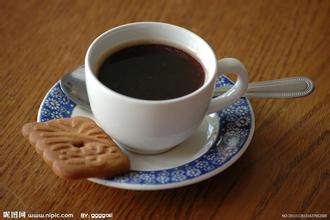Do coffee beans roast and blend or blend and roast?
Bake first and then mix, or match first and then bake? A lot of people ask me, is it baking and then matching, or is it first matching and then baking? Which way is better? If you have a definite recipe, of course the easiest way is to put different coffee beans together and then bake them together. But if you are trying and comparing different ingredients and proportions, you certainly want to bake all kinds of coffee beans before trying. Otherwise, every time you change the composition and proportion of the mix, you need to bake it again. For "Vienna Coffee" (Melange) blending and small test blending, it is more suitable for independent roasting. For example, when a small amount of "Rob Coffee" needs to be added in a trial mix, the required "Rob Coffee" is the most suitable for independent roasting. Some coffee is denser or changes in volume before and after roasting, and these beans are roasted differently from "washed" Arabica coffee. Arabica Coffee processed by the "drying method" is baked at a higher temperature. But in most cases, all kinds of coffee beans can be roasted together. My advice is: in general, all coffee beans can be roasted together. You need to consider using independent baking only when the baking effect is not ideal. At this time, independent baking can usually achieve better results. Especially for drum roaster, a relatively moderate baking degree can be found in general. But some individual coffee beans are not easy to bake evenly. For example, Yemeni coffee, Ethiopian DP coffee beans, and so on. Uneven baking color is not a defect. Only "washed" Arabica coffee needs to be roasted evenly.

Important Notice :
前街咖啡 FrontStreet Coffee has moved to new addredd:
FrontStreet Coffee Address: 315,Donghua East Road,GuangZhou
Tel:020 38364473
- Prev

Espresso blended with decaf Brazilian decaf beans
Espresso with several of my favorite decaf coffees if you need decaf, prepare some water-processed Brazilian decaf beans. Use 50% of this coffee bean, plus some other coffee beans with different flavors. If you want coffee that is almost completely decaffeinated, you can choose one of the following combinations: 50%
- Next

Popularization of knowledge about roasting and blending of coffee
The knowledge of roasting and blending of coffee is widespread, and people need to combine coffee from different places for several different purposes. The ideal goal, of course, is to piece together a coffee that tastes better than any of them. But generally speaking, Arabica coffee from a single origin is enough to make coffee that tastes good for export; it has a delicate flavor, a soft taste and a sweet aftertaste. So
Related
- Does Rose Summer choose Blue, Green or Red? Detailed explanation of Rose Summer Coffee plots and Classification in Panamanian Jade Manor
- What is the difference between the origin, producing area, processing plant, cooperative and manor of coffee beans?
- How fine does the espresso powder fit? how to grind the espresso?
- Sca coffee roasting degree color card coffee roasting degree 8 roasting color values what do you mean?
- The practice of lattes: how to make lattes at home
- Introduction to Indonesian Fine Coffee beans-- Java Coffee producing area of Indonesian Arabica Coffee
- How much will the flavor of light and medium roasted rose summer be expressed? What baking level is rose summer suitable for?
- Introduction to the characteristics of washing, sun-drying or wet-planing coffee commonly used in Mantenin, Indonesia
- Price characteristics of Arabica Coffee Bean Starbucks introduction to Manning Coffee Bean Taste producing area Variety Manor
- What is the authentic Yega flavor? What are the flavor characteristics of the really excellent Yejasuffi coffee beans?

